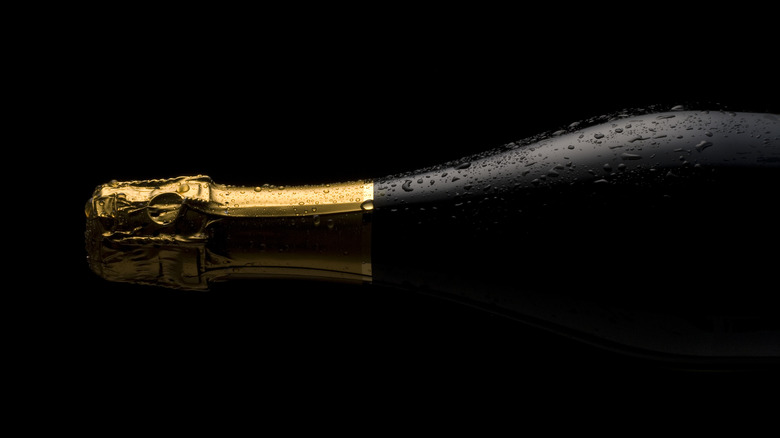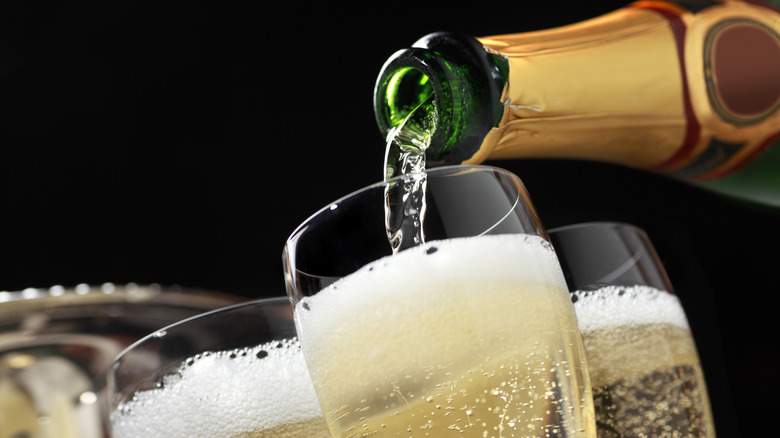The Champagne Storage Mistake You Should Stop Making
At a minimum, you've probably come across advice for storing wine, like keeping bottles away from direct sunlight or storing wines sealed with corks on their sides. These are all super solid tips. However, certain bottles may require some extra attention to detail, such is the case with Champagne. To ensure that bottles of bubbly remain in pristine condition, there's one temperature-based rule you need to remember.
Keeping wines at a stable temperature is a must. Since frequent fluctuation between hot and cold conditions will play a role in the deterioration of wine and its aging potential, storing wine (Champagne or otherwise) at a constant temperature is vital. That said, since we tend to drink Champagne at chillier temperatures to preserve its effervescence, crisp acidity, and nuanced aromas and flavors, one might assume that bottles can be also stored under colder conditions without any major repercussions — this isn't the case.
Similar to how warm settings can have damaging impacts on a bottle, leaving the sparkling wine in the fridge for weeks on end can actually have the same effect. This is because the zero-humidity climate will dry out corks faster, prompting oxidation and negatively transforming flavors. Additionally, bottles are also at risk of absorbing aromas from other foods stored next to Champagne. So, rather than ruin a perfectly good bottle of bubbly by storing it in your fridge, it's best to hold off for as long as you can.
Place Champagne in the fridge only before serving
The standard fridge can dip down to temperatures of about 35° Fahrenheit, making it too cold to store Champagne for extended periods of time. The solution? Keep bottles in a cool, dry, and dark environment such as a cellar, basement, or specially-designed wine fridge where a constant temperature between 50 and 60 degrees Fahrenheit can be properly maintained.
Yet since Champagne is best served well-chilled at temperatures around 43° to 45° Fahrenheit, bottles do still require some refrigeration prior to consumption. The key, however, is to place bottles in the fridge to chill only for a few hours (not weeks or months!) before serving. But if you don't have time to give Champagne a final cold blast in the fridge, don't panic and don't prop the bottle in the freezer. You can easily and efficiently reach the ideal serving temperature by placing bubbly in an ice bucket that's filled with equal parts of ice and water. After about half an hour, the Champagne will be ready to enjoy in all its glory!

